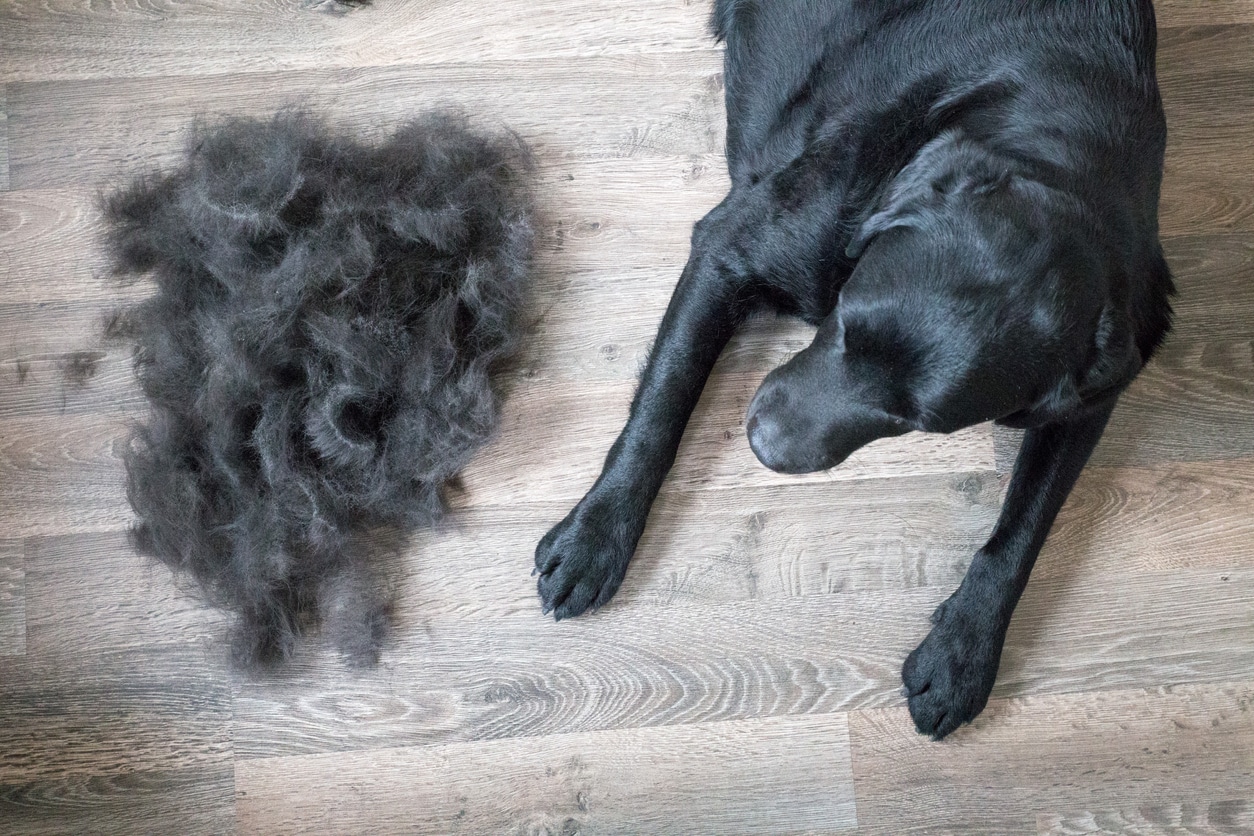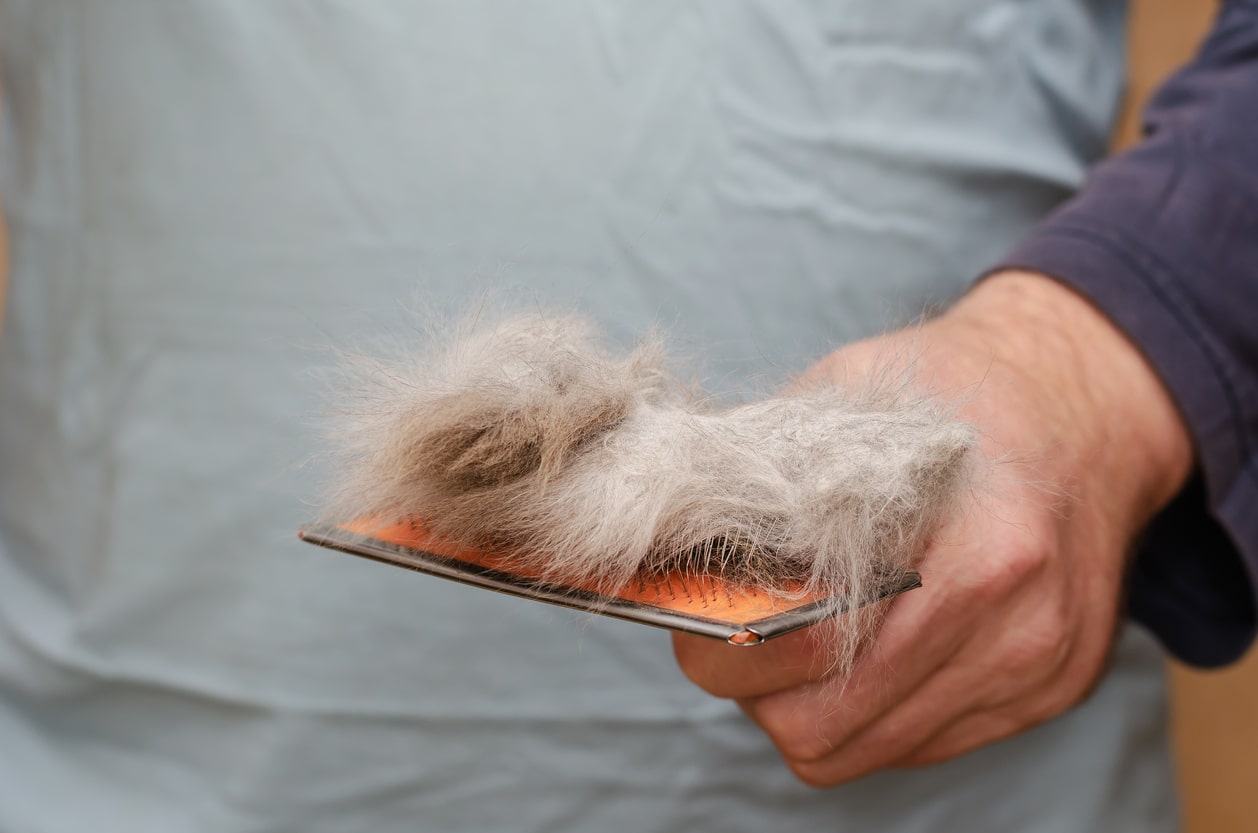You love your pet and its soft coat more than anything. However, finding hair everywhere is a real pain. They appear everywhere and especially where you don’t expect them. We clean a place and there it is already covered in hair! You’re careful, but a hair always manages to slip into the pan/the plate/the mouth… (we’ll go through some of the best ones). Besides, you must be knowledgeable about hair removal techniques, right? If you don’t shave them or make them wear a full suit, you can try this simple tip to limit hair loss in your pets.
In addition, also re-read our articles dedicated to hair loss in cats or dogs as well as our advice relating to hairballs in your feline.
What you need:
How to limit hair loss in dogs or cats?
1) Get some canola oil.
2) Pour a few spoonfuls onto your pet’s kibble.
This oil is very good for the skin and nails of your animals, but also excellent for their hair, in particular to limit hair loss in animals. This is explained by the fact that it is rich in omega-3 and omega-6 fatty acidsessential for skin and coat health. Adding a little rapeseed oil to your pet’s diet can help improve the texture of your hair, reduce skin inflammation and promote a shiny and healthy coat. This is why this technique reduces hair loss for a while.
Consider adding fish oil or flaxseed oil supplements to their diet to promote a healthy coat. The most intrepid can, for example, obtain cod liver oil capsules to slide into pâté or a piece of cheese.

Other tips against hair loss in cats or dogs
Basic advice
To limit hair loss in cats or dogs, there are several practical and natural tips that you can integrate into your daily routine. First of all, don’t neglect brushingonce or twice a week in short-haired cats and dogs and daily in long-haired cats and dogs to prevent tangles and eliminate accumulations of dead hair. Use brushes and combs here adapted to the hair type of your pet. For long hairs, a pin brush or undercoat rake can be helpful, while a rubber brush works best for short hairs. Optionally use a stripper to better remove dead hair and detangle knots more effectively. Please note that you can recycle your pets’ hair collected during brushing.
For bathing (following the frequency recommended by the vet and no more), use a shampoo specially formulated for animals so as not to irritate their skin. For skin hydration, the veterinarian will be able to recommend special moisturizing sprays or lotions for animals to keep your pet’s skin healthy if necessary. Furthermore, make sure that your pet’s diet is rich in omega-3 and omega-6 fatty acids, vitamins and mineralsbut also perfectly adapted to its needs (depending on its breed, size, age, weight, possible sterilization, etc.). Your pet should also always have access to clean, fresh water. Finally, use a humidifier if your home is particularly dry, especially in winter.

Extra tips against hair loss…
And calm environment is essential for reducing stress, a factor in hair loss. So create a calming environment for your pet, and offer him toys and activities to stimulate him mentally and physically. Additionally, use regular treatments against fleas, ticks and other external parasites for your little four-legged friend. Additionally, clean bedding, carpets, and furniture regularly to remove parasite eggs and larvae. Using washable covers on furniture can make cleaning easier. Also make sure your pet spends time outdoors or near sunny windows for good vitamin D synthesis.
Finally, try to minimize your pet’s exposure to environmental allergens like dust and pollen. And if your pet has food allergies, identify and eliminate potential allergens from their diet.

Do not hesitate to consult in case of continuous and abundant hair loss
Does the hair loss seem abnormally significant to you? Excluding moulting period and change of season in animals, it can be explained by various problems.
THE food or environmental allergies For example, they often cause itching and hair loss. Otherwise, there is also the track of external parasitessuch as fleas and ticks, which irritate the skin and lead to excessive hair loss. THE fungal and bacterial infections can also damage the skin and coat. Furthermore, a unbalanced dietpoor in essential nutrients such as omega-3 and omega-6 fatty acids, weakens the coat. Stress and anxiety also influence hair health. Finally, hormonal disorderssuch as hypothyroidism or Cushing’s syndrome, are common causes.
For the comfort, well-being and good health of your animal, consult a veterinarian without waiting. Even if it’s just a coat problem that may seem unimportant at first, the underlying causes can be serious and need to be caught in time.


